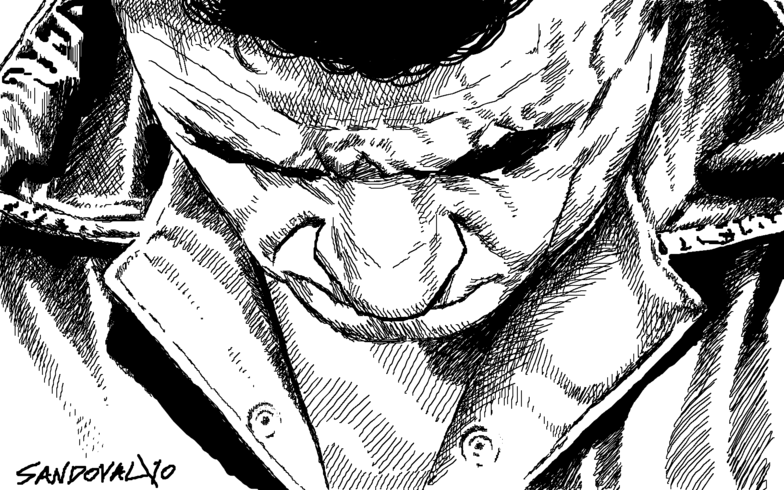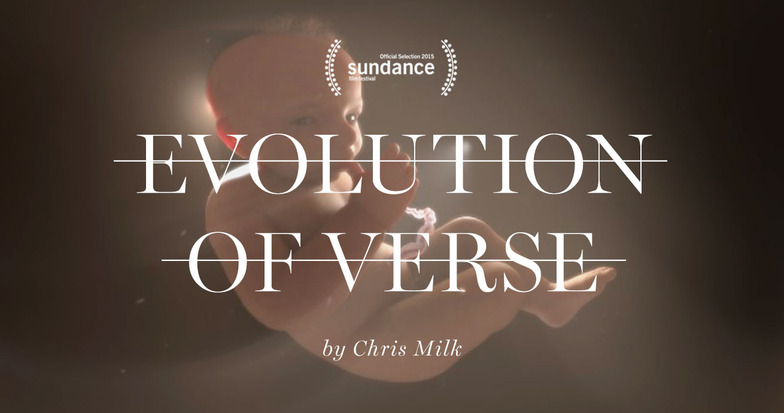At Dentsu Lab Tokyo, we call people who express themselves using technology "Creative Technologists." We interview Creative Technologists worldwide about their work and creations. Through this series, we explore what new forms of expression can emerge from technology.
Aaron Koblin, Pioneer of Data Art
In Part 1, we asked Aaron Koblin why he founded a Virtual Reality (VR) company. Koblin was part of Google's Data Arts team from 2008 to 2015 and last year launched VRSE, a company producing VR-based visuals, where he serves as CTO. In Part 2, he discusses how work has evolved since founding the company.
(This interview was conducted via online messaging.)
Technology Connects People and Art
Kida: Please tell us about your role at VRSE.
Aaron: I currently work as the founder and CTO of VRSE. My primary role is to present the vision, unite the team, and drive product development.
Kida: What does that entail specifically?
Aaron: Experimentation. I'm learning the methodology of storytelling. To tell a good story in VR, we need to understand what the best approach is, what storytelling fundamentally is, and how VR differs as a medium.
For example, within the 3D space of VR, how should we create the interaction between the viewer and the story? When telling a story, we must design with the viewer in mind.
Kida: I see. In VR, the perspective from which you shoot the footage is also crucial, right? If the narrator is a child, should the footage be shot from a child's height? Should the narrator be visible in the footage or not?
VRSE's clients range widely, from The New York Times and the United Nations to artists like U2. What kind of partners do you want to collaborate with?
Aaron: Using VR, we want to create immersive experiences. To do that, we want to partner with passionate artists and creators. Our goal is to make work that excites people and makes them want to connect.
Kida: I think the desire to use technology to connect viewers with the work is something that's been consistent, both before and after we started using VR.
Aaron: I've worked on projects with visual director Chris Milk since before founding VRSE. These range from animation crowdsourcing projects like The Johnny Cash Project to interactive music videos like Wilderness Downtown, where entering an address plays a music video using that location's Street View.
At VRSE, we also aim to create works that make viewers want to connect. We want to understand this technology from a storyteller's perspective and think about how to use it.

Johnny Cash Project
A music video created by 250,000 fans from 172 countries. We released 1,370 frames of the late Johnny Cash's "Ain't No Grave" video for anyone to trace, then compiled the collected images into a video. Fans' tributes to Johnny Cash were expressed through their participation in creating the video. Tracing is still possible via the website.
Building the Future of VR
Kida: Comparing the past Google Data Arts team to the current VRSE, I imagine the environment has changed in many ways. Are there differences in how you work when creating pieces or advancing projects?
Aaron: The Google Data Arts team operated in an environment with tremendous freedom to experiment. We released larger-scale projects through trial and error.
Most of what we do at VRSE is experimental. Our goal is to build systems for VR production and content distribution, so we take a different approach than the artist/hacker methods we're accustomed to.
Kida: Looking at some recent projects, there's been a lot of collaborative work, starting with Chris Milk. What do you pay attention to when collaborating with others? Also, how do you define your own role in these collaborations?

EVOLUTION OF VERSE
A collaborative work by Aaron and Chris. A journey from the middle of a lake to the palm of a baby's hand. Visuals are prepared whether you look behind you or up at the sky, creating the sensation of standing within the world of the visuals.
Aaron: Chris and I feel we complement each other very well. We have a slight overlap in our areas of expertise and a lot of overlap in our areas of interest. And ultimately, we each bring unique ideas and skills to the table, and we can share all of those as our own skills.
Choosing good collaborators is crucial. Finding people who can communicate openly is incredibly difficult. It's vital to be able to be brutally honest while considering the other person, and to function effectively as a team.
Kida: I see. Regarding VRSE and your work, please share a message for our readers.
Aaron: The direction VRSE is heading is incredibly exciting. We have great ambition. We want to shape the future of VR.
Everyone should see VR for themselves and check out how it evolves. Traditional media, including film, took time to mature. But with VR, I think it will become powerful relatively quickly.
Kida: Thank you very much. We look forward to your continued success!
[After the Interview]
Through storytelling, the meaning and application of technology were redefined
When discussing VR, it's often framed solely within a technology-first context. Listening to Aaron, however, it was striking how he maintains technology as his core expertise while prioritizing storytelling—specifically, "how to communicate effectively?" He seeks to uncover the underlying narrative through data. It's not about technology for technology's sake, but what you want to convey using it. That might be the crucial point.
In that sense, Aaron's approach has been consistent. What he has sought to do is not simply showcase technology for its own sake, but to uncover the human elements and fascination within it and narrate them. This could be rephrased as "connecting with people through technology." Ten Thousand Cents and The Sheep Market wouldn't have been possible without the cooperation of ten thousand artists. That's why Aaron treats not just the finished whole painting, but each individual stroke as a work of art, publicly sharing the creation process. In The Sheep Market, he was even able to sell these individual strokes.
Engaging with people through technology means taking an interest in each individual involved in the creation. This approach remains unchanged even when using VR as a medium. Walking New York, depicting New York from an immigrant's perspective, and The Displaced and Clouds Over Sidra, filmed from a refugee's viewpoint, all capture the world as seen from diverse standpoints.
By prioritizing storytelling and employing new technology, the meaning and application of that technology are redefined and expanded.
Full version of this article here







